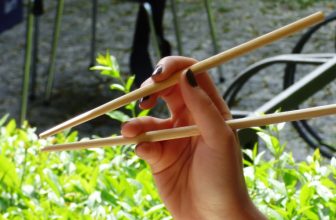How to Restore Bamboo Furniture
Bamboo furniture can add a touch of nature to any room, but it may begin to show its age over time. Bamboo is durable, but it’s not immune to wear and tear. So, if your bamboo furniture is starting to look a little rough around the edges, don’t worry. There are several ways you can restore it to its former glory.
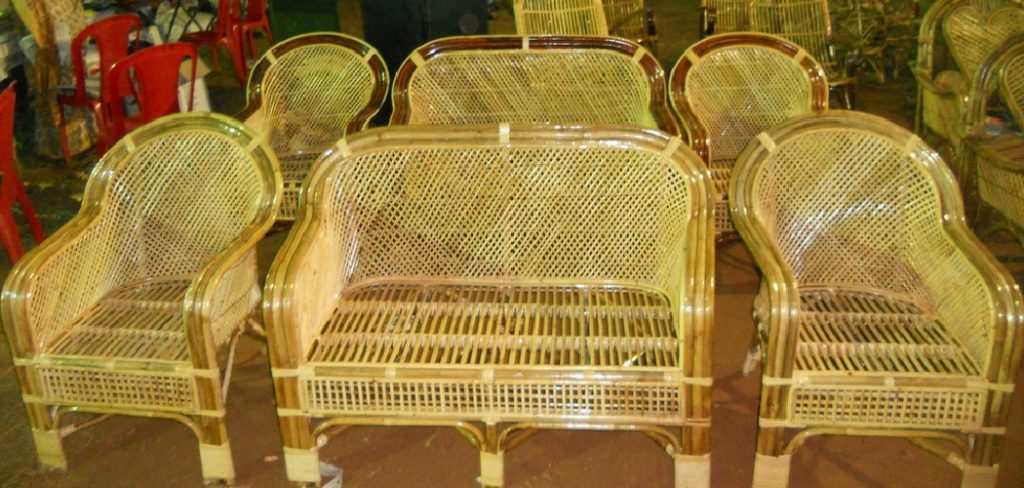
This blog post will discuss some different methods for restoring bamboo furniture: sanding, staining, and sealing. We’ll also provide tips on how to restore bamboo furniture using the right restoration method for your furniture and how to avoid common mistakes. So whether your bamboo furniture is old and faded or needs a little refreshing, read on for some helpful advice!
What is Bamboo Furniture?
Before we dive into the restoration process, it’s important to understand what bamboo furniture is and why it requires special care. Bamboo furniture is made from a type of grass that grows in tropical areas. It’s known for its strength, durability, and natural beauty.
Bamboo furniture can come in various forms such as chairs, tables, shelves, and even flooring. It’s a popular choice for eco-conscious consumers as bamboo is a renewable resource and grows quickly without the need for pesticides or fertilizers.
Why is Restoration Necessary?
As with any type of furniture, bamboo can become damaged over time from regular use and exposure to the elements. This can include scratches, dents, discoloration, and even mold or mildew growth.
Restoration is necessary not only to improve the appearance of your furniture but also to protect it from further damage. Restoring your bamboo furniture will help extend its lifespan and keep it looking beautiful for years to come.
11 Ways How to Restore Bamboo Furniture:
1. Strip It
Stripping makes it easy to remove old stains, dirt, and grunge. Use a cleaner containing methylene chloride or trisodium phosphate in hot water to remove old varnish, paint, glue, wax, and other debris. This will allow the new stain to better penetrate and adhere to the bamboo.
You can also use a chemical stripper specifically designed for bamboo furniture. Make sure to follow the instructions carefully and wear protective gear such as gloves and a mask. It’s also important to work in a well-ventilated area.
2. Neutralize It
If stripping doesn’t work well enough or you just want a fresh start, you can use a chemical stripper to remove old glue or stains from your bamboo furniture. However, chemical strippers are never recommended for outdoor furniture because they usually leave a waxy residue that attracts dirt and grime.
You can neutralize the chemical stripper by rubbing mineral spirits over the surface with a clean rag. Then rinse well with water and let it dry completely before proceeding to the next step. However, it’s best to use a traditional method of removing stains from outdoor bamboo furniture.
3. Repair It
Repair broken joints with dowels and clamps before reattaching the pieces of furniture. If you found any large gaps between panels after stripping, now is the time to fill them up with wood glue and sawdust. Don’t try to use bamboo furniture unless it’s sturdy; if it isn’t, you can reinforce it by clamping extra wood blocks to the inside or underneath the piece.
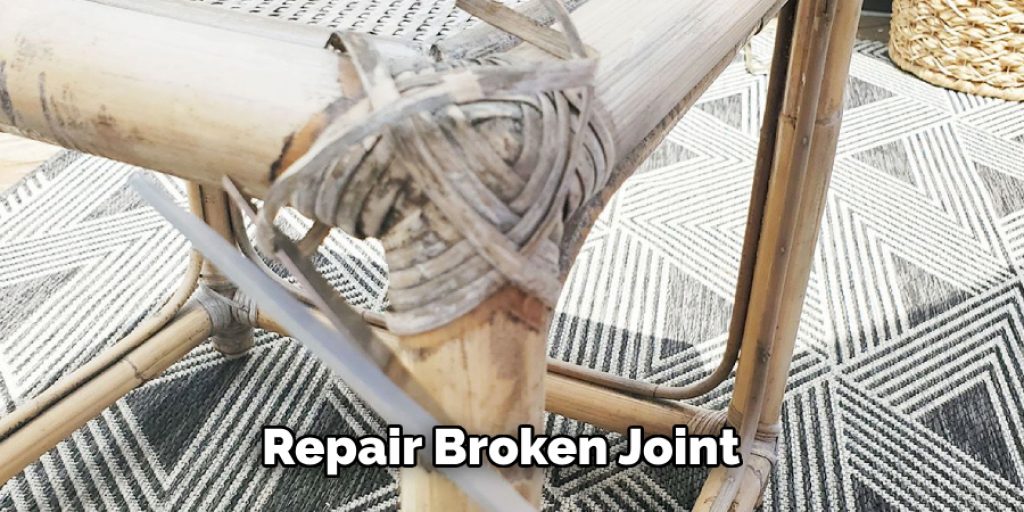
You can also use bamboo strips to weave and repair any damaged areas of woven bamboo furniture. Simply soak the strips in hot water for 30 minutes before using them to make them more pliable. It’s best to use a waterproof adhesive like marine epoxy to ensure a strong hold.
4. Stain It
Paint and other solid finishes should be sanded off the furniture before you try to stain it. Apply a generous coat of stain to the furniture with a brush, wait 15 minutes for it to dry, then wipe away any excess.
The color of the stain is important. If you want a darker finish without obscuring the bamboo’s natural features, try using a gel stain. You can also add multiple coats of stain for a richer look. The more coats you add, the darker the color will become.
5. Seal the Cracks and Holes
Use a strong wood filler to fill in any cracks or holes in your bamboo furniture. When the filler is dry, sand off any excess with coarse-grit sandpaper. Be careful not to leave large clumps of filler, as seen through the stain. Sand it smooth to match the surrounding bamboo.
You can also use any leftover sawdust from the sanding process mixed with wood glue to fill in smaller holes and cracks. This will create a natural-looking filler that blends in seamlessly with the bamboo.
6. Refinish the Surface
Restore the golden shine of your bamboo furniture by sanding off old paint or chemical stripper. Apply a new coat of varnish, wait for it to dry thoroughly, then rub marks out with fine-grit sandpaper.
If you’re using a water-based polyurethane, apply two or three coats with a brush, waiting for each coat to dry before applying the next. If you’re using an oil-based polyurethane, only one coat is needed. Make sure to wear gloves and work in a well-ventilated area.
7. Soften the Sealant
If you want to add extra protection or a little shine, mix some mineral oil with fine-grit sanding dust and use it to polish your furniture. Apply at least two coats of wax if you’re going to have a dining set out in direct sunlight. But if it will be used outside, don’t use wax as a sealant.
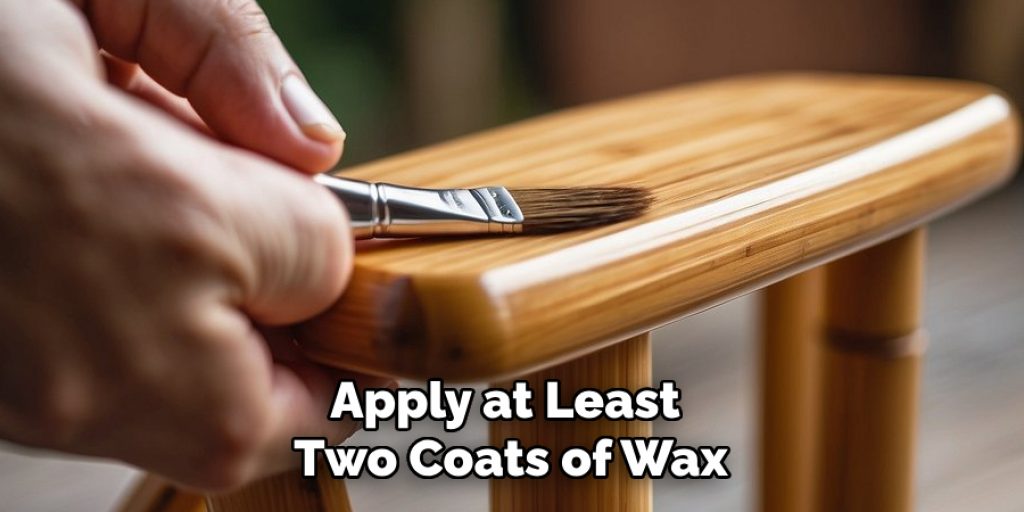
It’s also important to regularly maintain the sealant on outdoor bamboo furniture, especially if it’s exposed to harsh weather conditions. This will help prevent moisture from seeping into the bamboo and causing damage.
8. Wipe It Down
Use a dry rag or wax paper to wipe off your furniture after you’ve finished sanding, staining, and sealing it. If you spill any excess wood filler or varnish on the surface while applying these substances, use water to remove them before they dry completely.
The last thing you want is for your furniture to be ruined by unsightly marks or stains. So, make sure to wipe down your bamboo furniture thoroughly and regularly. It will not only keep it looking clean and well-maintained, but it will also help prevent any potential damage from occurring.
9. Fix the Hardware
If any of the hardware on your furniture is damaged, replace it with new hinges, screws, or drawer pulls. The old ones may match the style of your furniture, but they can also rust or break. Replace them with new ones that will not only look better but also function properly.
It’s important to regularly check and replace hardware on your bamboo furniture, as it can become loose or damaged over time. This will help keep your furniture sturdy and secure, ensuring its longevity.
10. Dispose of the Old Finish
When you’re finished restoring your bamboo furniture, you’ll need to dispose of the chemical stripper or old sealant in an environmentally friendly way. If you live in a rural area, contact your local recycling center for suggestions on properly disposing of hazardous chemicals.
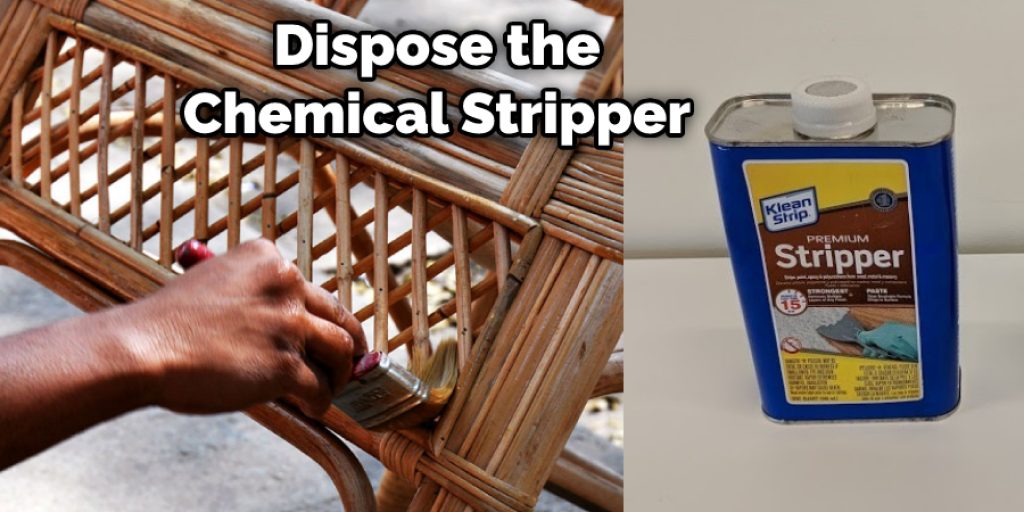
But if you live in an urban area, there may be designated locations or disposal services for hazardous waste. Make sure to follow all instructions and dispose of these materials responsibly to protect the environment.
11. Keep Your Bamboo Furniture Looking Great
No matter how you choose to restore your bamboo furniture, it’s important to maintain it regularly and properly. This will not only keep it looking great, but it will also ensure its longevity and prevent any potential damage.
Remember to clean off any dirt or debris from the surface of your furniture regularly, as well as check for any damage or loose hardware. By following these steps, you can keep your bamboo furniture looking beautiful for years to come. So, enjoy the beauty and durability of your restored bamboo furniture! Keep it clean and well-maintained, and it will continue to be a great addition to your outdoor living space.
Some Helpful Tips to Restore Bamboo Furniture:
Here, we have given some helpful tips on how to restore bamboo furniture.
1. Carefully read the instruction manual that comes with your bamboo furniture. Some manufacturers recommend certain cleaning products when you first purchase your furniture.
2. Sometimes, the reason why your bamboo furniture looks like it does is because of how you cleaned or treated it in the past. Also, do not disregard what the tag on the back of the piece says; if there are any specific instructions, follow them!
3. After you have properly cleaned and treated the bamboo furniture, you can start restoring it. Start with a clean and dust-free environment, then clean some of the pieces that need restoration, such as drawers, cabinets, etc.
4. Use a microfiber cloth and add furniture polish such as Murphy’s Oil Soap.

5. After polishing, use a clean microfiber cloth to wipe the piece again and dry it off with another clean microfiber cloth.
6. If you choose not to use any of the above products, then use water.
7. Make sure you allow the wood to completely dry before moving onto another piece or re-hanging/placing it back in its original place in your home.
Common Mistakes to Avoid When Restoring Bamboo Furniture:
1. Don’t sand or refinish with a high-sheen finish:
Like most natural materials, bamboo is susceptible to damage from abrasion and chemicals. Treating your bamboo furniture to one coat of highly polished lacquer will seal the damage and destroy its character. Also, avoid using alcohol or any other solvent on bamboo as it’s a very effective cleaner, and you may end up damaging the furniture.
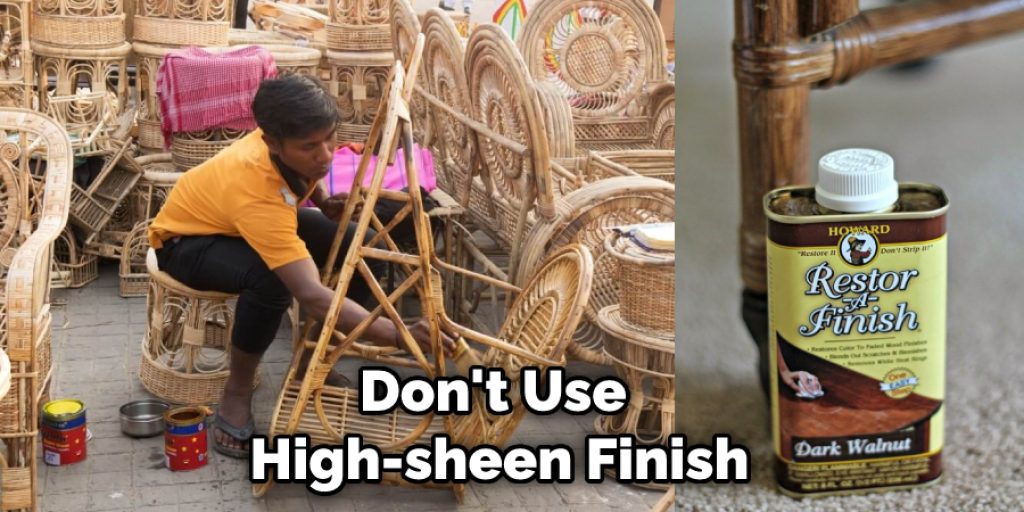
2. Don’t use water:
Make sure you don’t get any water on your bamboo, as this can damage the surface of the wood, even with a lacquer finish. As with other woods, moisture is not good for bamboo furniture. If you do get water on the furniture, dry it off as soon as possible and then apply a coat of lacquer.
3. Don’t use harsh chemicals:
Chemicals like bleach or ammonia can also damage bamboo furniture. If you need to clean the furniture, use a mild soap and water solution and avoid using any abrasive cleaner.
4. Don’t refinish unless necessary:
If you want to restore your bamboo furniture, don’t refinish it unless it’s necessary. Refinishing is an essential step in protecting and restoring your furniture, but there’s no need to go overboard with this process. If the finish has only minor surface damage or age spots, you can easily preserve the finish by regularly waxing your furniture.
5. Avoid the heat:
Extreme heat or extremely cold temperatures can cause problems with your furniture. If you live in a hot environment, be sure to keep it out of the sun (especially if there is no lacquer finish) and avoid exposing it to any artificial heat sources such as fireplaces, radiators, or space heaters.

Bamboo furniture is a beautiful and unique addition to any home. By following these simple tips, you can help restore your bamboo furniture and keep it looking beautiful for years to come!
How to Clean Your Bamboo Furniture?
To clean bamboo furniture, wipe surface dirt away with a damp cloth and allow it to dry. Then, apply a coat of wax or sealant to maintain the luster as needed. Do not use solvents or excessively wet cloths. To maintain a rich color, avoid prolonged exposure to direct sunlight and use a protective pad under items placed on the furniture.
Bamboo is an extremely durable material that stands up well for everyday use. Bamboo is naturally dirt and damage resistant, but accidents can happen. If your bamboo piece becomes damaged, carefully sand out the problem area before refinishing or refinishing it. Remove any loose finish with steel wool and apply a fresh coat.
Frequently Asked Questions:
Q: How Often Should I Clean My Bamboo Furniture?
A: It is recommended to clean your bamboo furniture at least once a month or more frequently if it’s exposed to excessive dirt and grime. You should also inspect and clean your furniture after any outdoor events or gatherings. It’s important to clean off any dirt or debris regularly to prevent potential damage and maintain the furniture’s appearance.
Q: Can I Use Any Type of Cleaning Product on My Bamboo Furniture?
A: No, it’s important to avoid harsh chemicals and solvents when cleaning your bamboo furniture. These can damage the surface of the wood and ruin its appearance. Instead, opt for mild soap and water or specific furniture polish products recommended by the manufacturer. You can also use a microfiber cloth to gently clean the surface of the furniture. The key is to avoid using excessive water or abrasive cleaners.
Q: How Can I Protect My Bamboo Furniture from Sunlight?
A: Sunlight can cause fading and damage to bamboo furniture. To protect your furniture, try to keep it out of direct sunlight or use a protective cover when not in use. You can also apply a protective sealant or wax regularly to help maintain the color and finish of the furniture. You can also place protective pads under items placed on the furniture to prevent scratches or damage.
Q: Is It Necessary to Refinish My Bamboo Furniture?
A: It’s not always necessary to refinish bamboo furniture. Regular cleaning and maintenance can help preserve the finish and appearance of the furniture. However, if the finish has significant damage or age spots, you may need to refinish it. If you do decide to refinish your furniture, be sure to avoid using harsh chemicals or sanding too aggressively, as this can damage the bamboo. It’s always best to consult with a professional or follow manufacturer recommendations when it comes to refinishing furniture.
Conclusion:
Bamboo furniture has many benefits. It is also important to maintain the beauty and durability of your bamboo furniture by following these simple steps on how to restore bamboo furniture! The key to restoring your bamboo furniture is patience. You can’t rush the process, and with a little care, you’ll enjoy many years of use from this investment in quality furnishings.
Apply an oil-based product to the surface of the wood to seal it from moisture and dirt buildup over time. Many products available on the market, such as polyurethane or waxes, will work well for this task. After applying one of these products, use a natural dry cloth to rub in the desired direction until you have reached your desired finish level. If you’re looking for help getting started or need guidance on how to restore bamboo furniture, contact us today!
Read Another article: How to Remove Varnish From Bamboo Furniture




